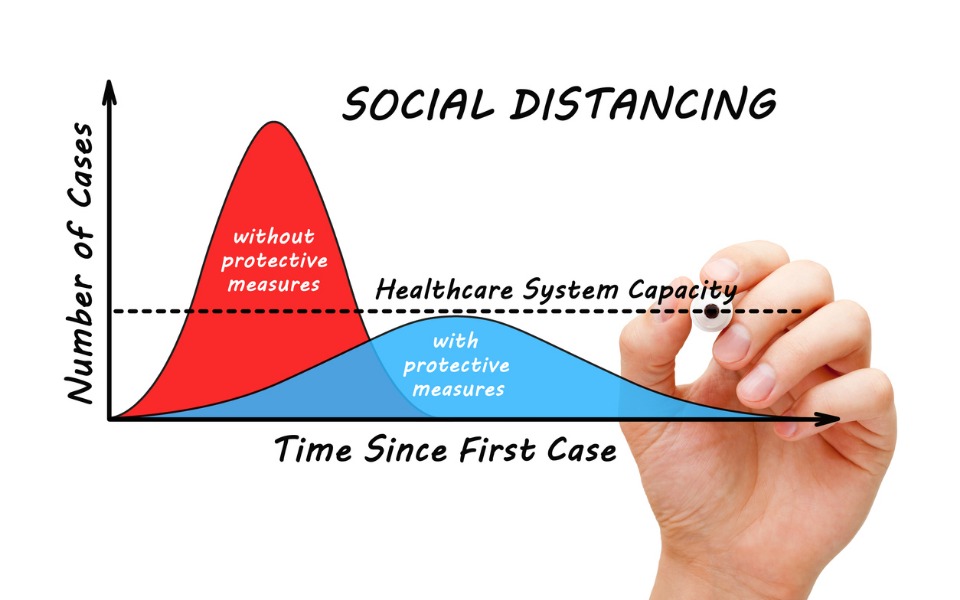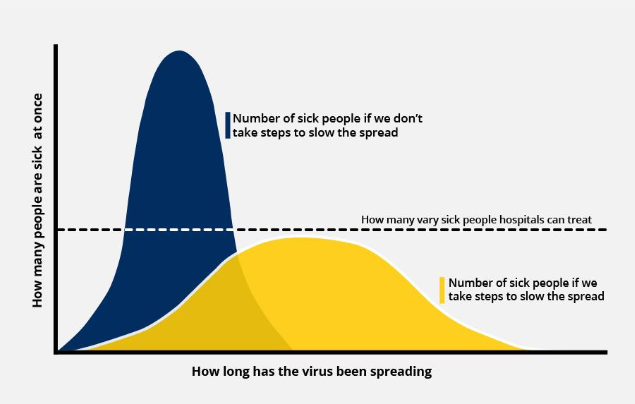
India's COVID curve is flattening but threat is far from over
India, which is the size of several Europes and having the world's second largest population, could be overwhelmed when small numbers multiplying gradually, unless the recovery rate maintains its pace and overtakes the new cases.

Coronavirus has taught us various new terminologies, a prominent one among them being “flattening the curve”.
Scientists, physicians, politicians, journalists and even common people have begun to use the mathematical term indiscriminately, often implying that the world could be saved from the deadly virus only if the growth curve of the coronavirus is flattened.
There is an element of truth in the statement. But the overuse of the term has led to a mistaken notion that once the curve starts ‘flattening’, the cases will vanish.
The strategy of ‘flattening the curve’ is not about reducing the number of cases, but lowering the steep climb of the curve to a more flatter one, which in other words is to spread the number of cases over a longer period of time. Essentially, it helps ‘BUY TIME’ so that there is no sudden pressure on the limited hospitals and health infrastructure.

For instance, India has 0.55 hospital beds for every 1,000 people whereas Japan has 13.05 and South Korea 12.27.
Furthermore, in India, the beds are found in higher numbers in the cities. For instance, Delhi has 2.7 beds for every 1,000 people and Chennai has 2.3 beds per thousand.
As far as Intensive Care Units (ICU) are concerned, India has 0.5 beds per one lakh people, as opposed to 35 in Germany and 39 in the US. The number of ventilators, which are required when a patient is in critical condition and needs oxygen support for survival, is only about 27,000 (pre-COVID, currently estimated to be at 40,000) for the entire Indian population, while 8.3 ventilators per lakh are available in Italy.
You may get the drift as the numbers give a fair idea of how much we lag in terms of hospital infrastructure. The real worry here is a scenario when a large number of patients suddenly turn up at a hospital when the coronavirus spreads in geometric progression.
Related news | Kerala has succeeded in flattening the COVID-19 curve. Here’s how
To avoid deaths caused by paucity of healthcare infrastructure — which is referred to as “avoidable deaths”, like the ones we saw in Italy where doctors had to choose between a 77-year-old and a 37-year-old to decide who gets the ventilator — the affected nations are trying to flatten the curve.
It has been more than a month since India enforced a lockdown. This has completely stopped the economic activity and left many jobless. As pressure mounts to revive the economy and lift the lockdown, the question that we face now is, has India’s coronavirus curve flattened?
There is almost a triumphant cry in the air on how the nation has managed to flatten the curve. For instance, the number of cases that would multiply in two days elsewhere has gradually become 4 days, and then 6 days now. Government data claims that this has become 8.4 days now. So far so good, but what lies ahead?
Here, caution is advised since we are still not out of the woods.
The curve takes on different shapes depending on the virus’s infection rate. The curve could be steep, in which case the virus spreads exponentially (that is, the case count keeps doubling at a consistent rate), and the total number of cases zooms to its peak within a few weeks. But again, the infection curve, which sees a steep rise, also sees a steep fall later — after the virus infects pretty much all those who can be infected.
The faster the infection curve rises, the faster the local healthcare system gets overloaded. As we saw in Italy and even a few American cities, more and more new patients may be forced to go without ICU beds, and more and more hospitals may run out of basic supplies they need to respond to the outbreak.
But a flatter infection curve, on the other hand, witnesses the same number of people ultimately contracting the infection, but simply over a longer period of time. A slower rate of infection means lower stress on our healthcare system, fewer hospital visits on any given day (number of new cases), and a lesser number of sick people being turned away.
So how has the lockdown helped us?
India’s 21-day lockdown has helped us buy time to prepare hospitals for a surge of COVID-19 cases. The stringent shutdown has also helped reduce new cases in the weeks that followed the shutdown. This has to be attributed to the success of strict enforcement of social distancing practices and good contact tracing that was followed during the course of the lockdown in some areas.
However, we still have a long way to go in this battle against the pandemic because of the following reasons. One, we have just started testing aggressively since the testing kits arrived late. Second, India is the size of a continent where several Europes would fit in and has second largest population in the world. Finally, small numbers multiplying gradually could still overwhelm medicare, unless the recovery rate maintains its pace and overtakes the new cases.

